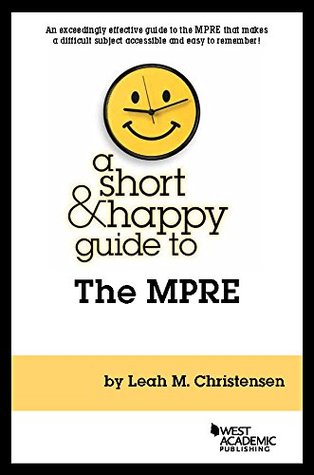Kindle Notes & Highlights
Read between
August 1 - August 2, 2017
even when clients grant consent, a client can revoke that consent at any time.
Rule 1.16(a) makes withdrawal mandatory because the continued representation would violate Rule
“[a] firm may not drop a client like a hot potato, especially if it is in order to keep happy a far more lucrative client.”
A lawyer who no longer represents a client still owes that client a duty of confidentiality and loyalty.
lawyer may not represent a client in the following scenario: when the interests of a client are (1) materially adverse to the interests of a former client of the lawyer; and (2) the representation is in the same or a substantially related matter, unless the former client gives informed consent for the representation.
The current matter is substantially related to the earlier matter if: (1) the current matter involves the
work the lawyer performed for the former client; or (2) there is a substantial risk that representation of the present client will involve the use of information acquired in the course of representing the former client, unless that information has become generally known.
a lawyer-client relationship exists if a party reasonably believes that a lawyer represents that party.
former clients can still say ‘no’ and choose not to provide consent. In that circumstance, the lawyer will need to decline the representation of the new
client—plain and simple. This is a difficult situation, but the former client’s decision controls.
“imputation”
if a lawyer has a conflict of interest, all lawyers in the same firm have the same conflict.
Imputation does not occur if the basis of the disqualification is a personal interest of the lawyer versus an actual conflict of interest under Rule 1.7 or Rule 1.9, as long as the situation does not present a significant risk of materially limiting the representation.
lawyer still has a duty of confidentiality to that client.
while lawyers are associated in a firm, none of them shall knowingly
represent a client when any one of them practicing alone would be prohibited from doing so by the rules on conflicts of interest with current and former clients (Rules 1.7 and 1.9).
“screening,” which separates the new lawyer from any data or information,
and denies the lawyer the ability to gain or provide information about the matter.
detail the requirements for adequate screening: (1) material information in the possession of the personally disqualified attorney must be isolated from the firm; (2) the personally disqualified attorney must be isolated from contact with the client and with witnesses for or against the client; (3) the personally disqualified attorney and the firm cannot discuss the matter with each other; (4) notice and an affidavit from the personally disqualified attorney containing certain prescribed information must be sent to the former client; and (5) the personally disqualified attorney and the new
...more
lawyer may limit the scope of a representation if the limitation is reasonable and the client gives informed consent.
Rule 1.2(d) clarifies that a lawyer may explain the consequences of possible course of action to the client. A lawyer may also assist a client in determining whether particular conduct is criminal or fraudulent and in determining the validity, scope, and meaning of any possibly applicable laws.
a lawyer does not endorse or accept a client’s views or actions simply because the lawyer represents the client.
duty not to disclose information relation to the representation of a client, there is also a duty not to use the information to the disadvantage of the client.
When Must a Lawyer Disclose Confidential Information Despite the Duty of Confidentiality?
H. When May a Lawyer Reveal Confidential Information?
may reveal confidential information only to the extent the lawyer reasonably believes necessary to prevent whatever harm the exception is designed to avoid.
The duty of confidentiality is one of the most important topics to know well for the MPRE. The key is to understand the exceptions, both when a lawyer must reveal confidences and those more common situations where a lawyer may disclose confidential matters.
a lawyer-client relationship exists when the prospective client reasonably believes that such a relationship exists, and if such a relationship exists, then various duties are owed.


